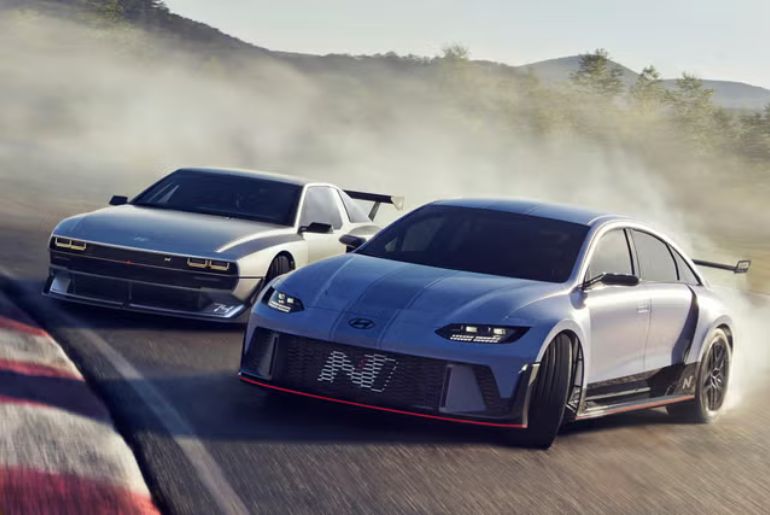The IONIQ 6 N, Hyundai’s next electric sports car, will only be produced in extremely small quantities. For consumers in the US, Europe, Korea, China, and other international markets, only a few thousand units will be produced each year.
Hyundai debuted the IONIQ 6 N at the Goodwood Festival of Speed less than two weeks ago. After the IONIQ 5 N, this is the Korean automaker’s second electric car to receive the “N” treatment.
Despite its outstanding exterior and inside, obtaining one can be challenging. A recent report claims that Hyundai is restricting its yearly manufacturing to 6,000 units.
China will receive the most of it, with 2,000 units, because of its strong worldwide lead in EVs. 1,500 models will be sent to North America. A total of 1,500 devices will be shipped to Europe and Australia, and 1,000 units will be sold in Korea. Hyundai did make a suggestion that those estimates might alter depending on local demand.
The new IONIQ 6 N is not just a sporty electric vehicle. In the context of Hyundai’s high-performance brand, it is “a pivotal milestone“.
With two electric motors producing 641 maximum horsepower (478 kW) and 568 lb-ft (770 Nm) of torque, the IONIQ 6 N can accelerate from 0 to 100 km/h (0 to 62 mph) in 3.2 seconds.
It is based on the IONIQ 5 N and has popular features including Drift Optimiser, Active Sound+, and N-eShift with additional virtual gears.
Additional performance options that optimise settings to liberate more power and give you greater control over the car include N Torque Distribution and N Grin Boost.
The Hyundai IONIQ 6 N has a WLTP range of 291 miles (469 km) and is powered by an 84 kWh battery. At 221 miles, it is anticipated to rank somewhat higher than the IONIQ 5 N on the EPA rating scale. The IONIQ 6 N can recharge from 10% to 80% in just 18 minutes at charging rates of up to 350 kW.
Hyundai’s new electric vehicle is roughly the size of a Porsche Taycan, with dimensions of 1,940 mm for width, 1,495 mm for height, and 4,935 mm for length.
In September, Hyundai’s Asan plant is scheduled to start production. By the end of the year, Korea will receive the first client deliveries, followed by Europe and Australia. It will reach China and North America early next year.

